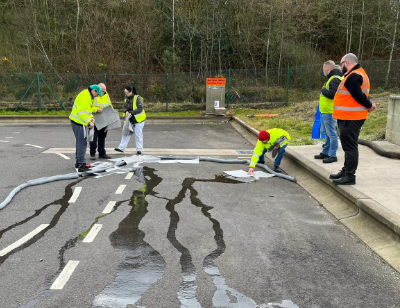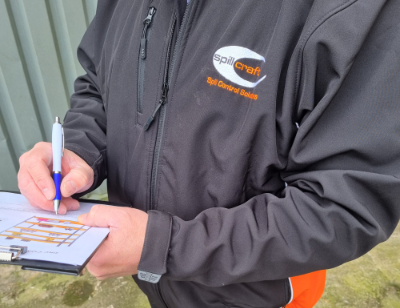We use cookies to make your experience better. To comply with the new e-Privacy directive, we need to ask for your consent to set the cookies. Learn more.
Spillcraft guide to understanding absorbents
If you work with liquids, by law you must have a spill response plan in place, which must include a reponse to spills in the workplace. Spills and leaks can have detrimental affects on people and the environment so must be taken seriously.
Absorbents are used for spill response as they are designed to be quick and effective at soaking up a variety of liquids and once used can be incinerated. Absorbents are available in a range of solutions all with different benefits. With so many options you available you may understand that you need absorbents but you need to understand which type would best suit your business needs
Here at Spillcraft we have been working with our customers for many years, researching solutions for a range of problems. We work closely with our UK Supplier to provide effective absorbents, made here in the UK.
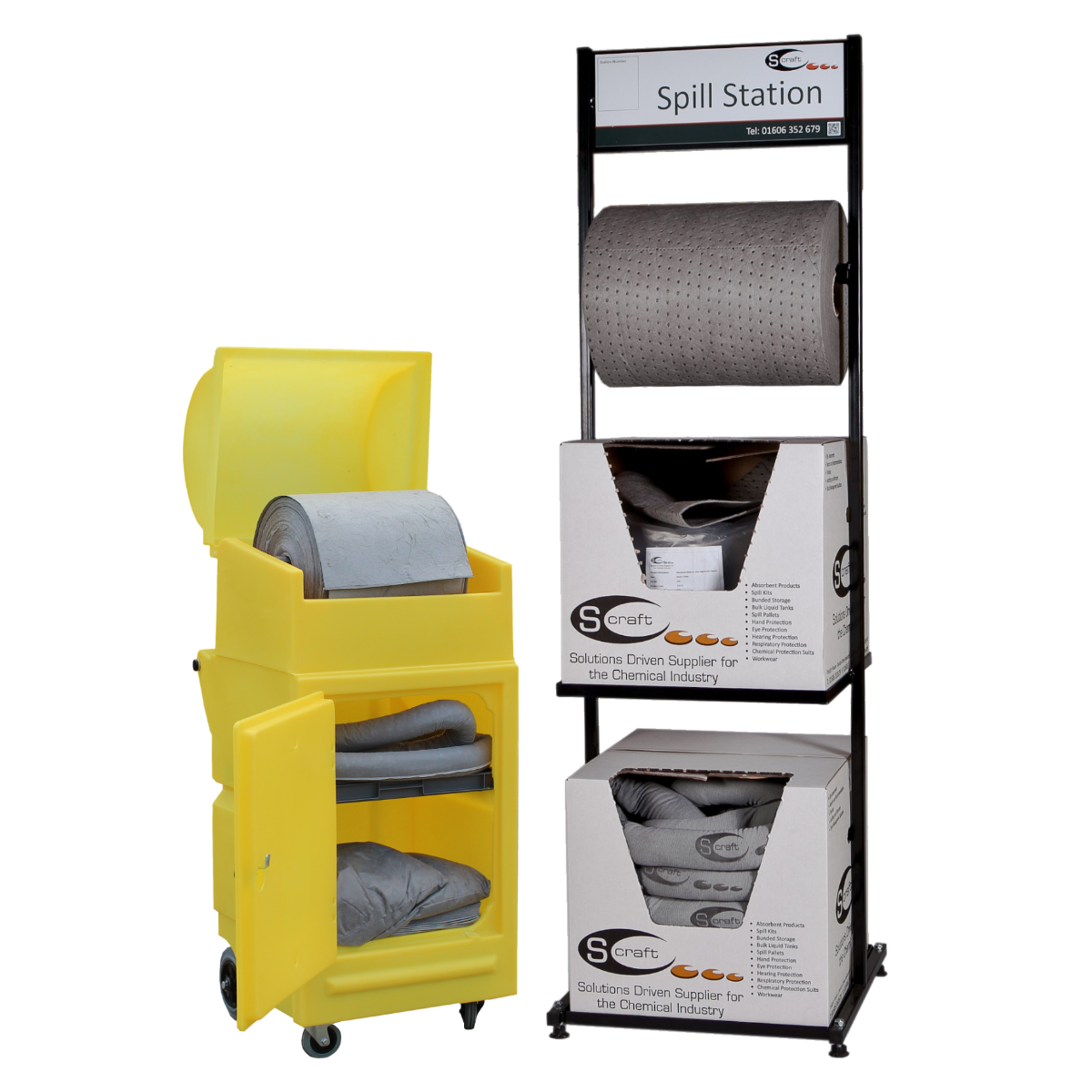

Why are absorbents colour coded?
Absorbent mats, rolls, socks, booms and pillows are made in industry standard colours to ensure they are recognisable. This ensures you select the correct absorbent for the liquid as well as making it clear afterwards what has been spilt.
General purpose spills = grey
General purpose, or maintenance absorbents can be used for a wide variety of liquids so are a versatile option for many businesses. They will absorb water, solvents, oils and coolants but should not be used on chemical spills or aggressive liquids. These absorbents are ideal for a wide range of environments offering a general spill solution to many industries.
Oil and fuel spills = White
Made from hydrophobic fibres which means they absorb oil based liquids but repel water. Ideal for spills on ponds, canals and other bodies of water the clever material is highly absorbent as it doesn’t absorb unwanted water, making it more effective at absorbing oils. The white colour also shows you how much oil has been absorbed so you can easily identify when further absorbents are required.
Chemical and hazardous spills = yellow
Suitable for hazardous spills including industrial liquids and aggressive chemicals such as corrosive or caustic liquids. Highly visible these absorbents will effectively clear up dangerous spills. Extra care should be taken when placing the absorbents down and when you are ready to dispose of them as the absorbent will still be as dangerous as the original liquid spilt so can be harmful.
Types of absorbent material
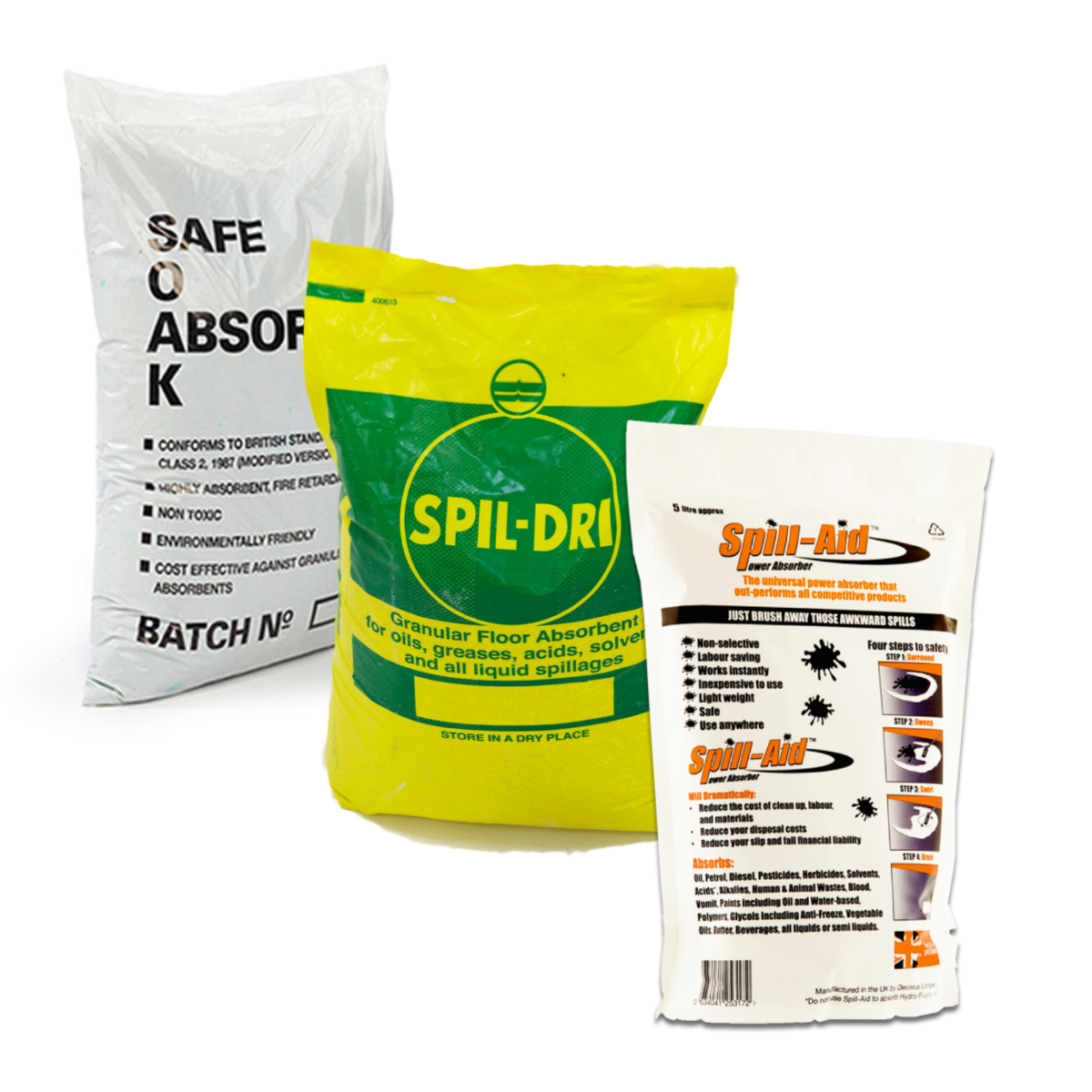

Absorbent Granules
Absorbent granules are a flexible option for your spill response plan capable of absorbing chemicals, oils and water spills both inside and outside. Simply sprinkle the absorbent granules over the spillage, and they will start working immediately. It is recommended you use granules around a spill to contain it. Once contained, work the granules into the spilt liquid with a stiff brush until completely absorbed.
There are a lot of different types of absorbent granules available depending on the requirements you have and the liquid you need to absorb. Granules are not colour coded like other absorbents so care should be taken when selecting the best type for your needs. However, granules are more flexible than other absorbents such as socks and mats as they can be distributed wherever they are needed, into small crevices and cracks, under machinery, as well as open spaces such as warehouses, to contain a spill from spreading as well as absorbing the spill.
Granules are available to absorb water based liquids, oil and chemicals. There are different materials used in absorbent granules including wood fibre and clay granules, plus many more.
Absorbent Mats and Absorbent Pads
Absorbent mats or pads provide a large, flat surface area to quickly absorb a spill. A perfect solution to cleaning a spill which has been contained, these mats can be laid out across the spill and will start to work immediately. The pads can be used individually for small drip areas, or in multiples to absorb a large amount of liquid. These pads are highly absorbent and will keep their shape when fully saturated, making a clean-up much easier as well as safer.
Absorbent mats and pads are colour coded to industry colours for spills. Grey for general purpose, yellow for chemicals and white for oils.
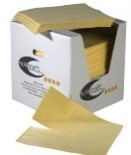

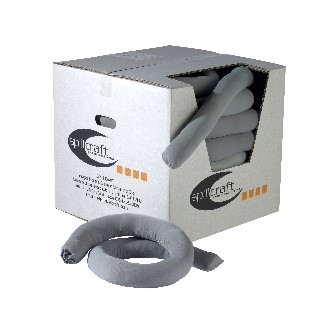

Absorbent Socks and Booms
Absorbent socks are long material tubes filled with absorbent material capable of absorbing and preventing the spread of spills. Used mainly for spill containment, they can be placed around the edge of a spill to contain it from spreading further, allowing other absorbents to be deployed and absorb the retained liquid. Also suitable to wrap around machinery absorbent socks are effective in catching small leaks and preventing further issues. Sometimes also referred to as pigs or sausages, they are available in two sizes, 1.2m lengths and longer socks are 3metres long.
Absorbent socks are colour coded to industry colours for spills. Grey socks for general purpose spills, yellow socks for chemicals and aggressive liquids and white socks for oil spills
Absorbent booms are larger socks which can be tied together and used on bodies of water to effectively clear a spillage.
Absorbent pillows and absorbent cushions
Pillows or cushions are small but mighty. Highly absorbent they retain a large amount of liquid and are ideal for deeper pools of liquid or absorbing a spill which has been contained with absorbent socks. The pillows can also be used in tight spaces of machinery and underneath persistent drips.
Absorbent pillows are colour coded to industry colours for spills. Grey pillows are for general spills, yellow pillows for chemicals and white pillows for oils and fuels


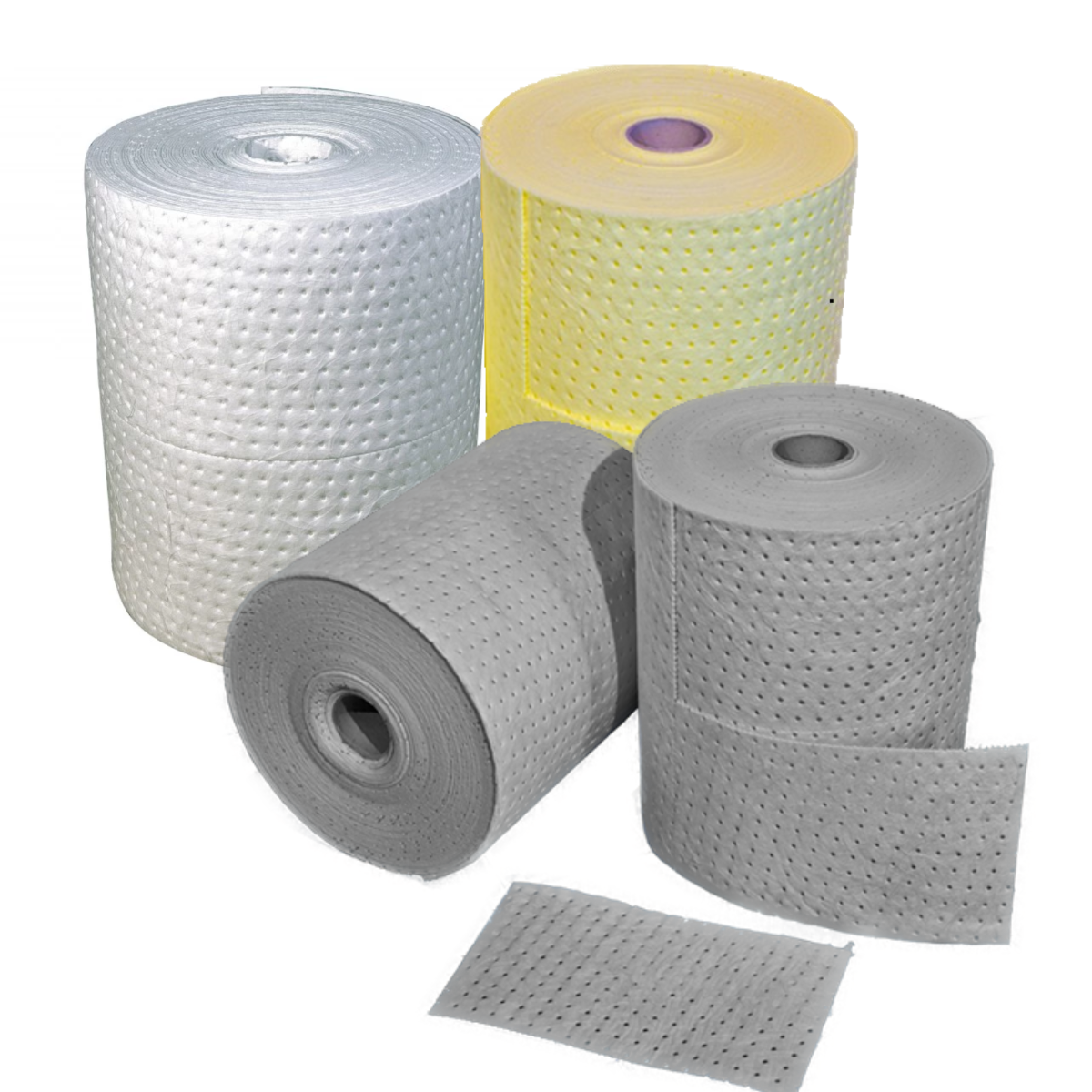

Absorbent Rolls
Rolls provide a cost-effective solution to spill control. Often perforated in length and occasionally also in width, they provide the opportunity to use a small amount if required or cover a very large area if used in a longer run of absorbent. Ideal for using in walkways or around machinery to prevent leaks and overspray from spreading.
They can be used to absorb spills as well as a wipe to clean up small amounts of residue on a surface.
A flexible option for many industries, ideal for workstations,roll holders are available for ease of use.
Absorbent rolls are colour coded to industry colours for spills. Grey absorbent rolls are used for general spills, yellow rolls are used for chemical spills and white rolls are available for oil spills.
Absorbent Drum Toppers
Ideal for keeping drum tops clean and free from spills, the absorbent drum toppers are designed to fit a 205ltr drum. Providing a high level of absorbency these toppers prevent spills from spreading and contamination from effecting the drum.
Absorbent drum toppers are available in general maintenance (Grey) and also for chemicals (yellow).
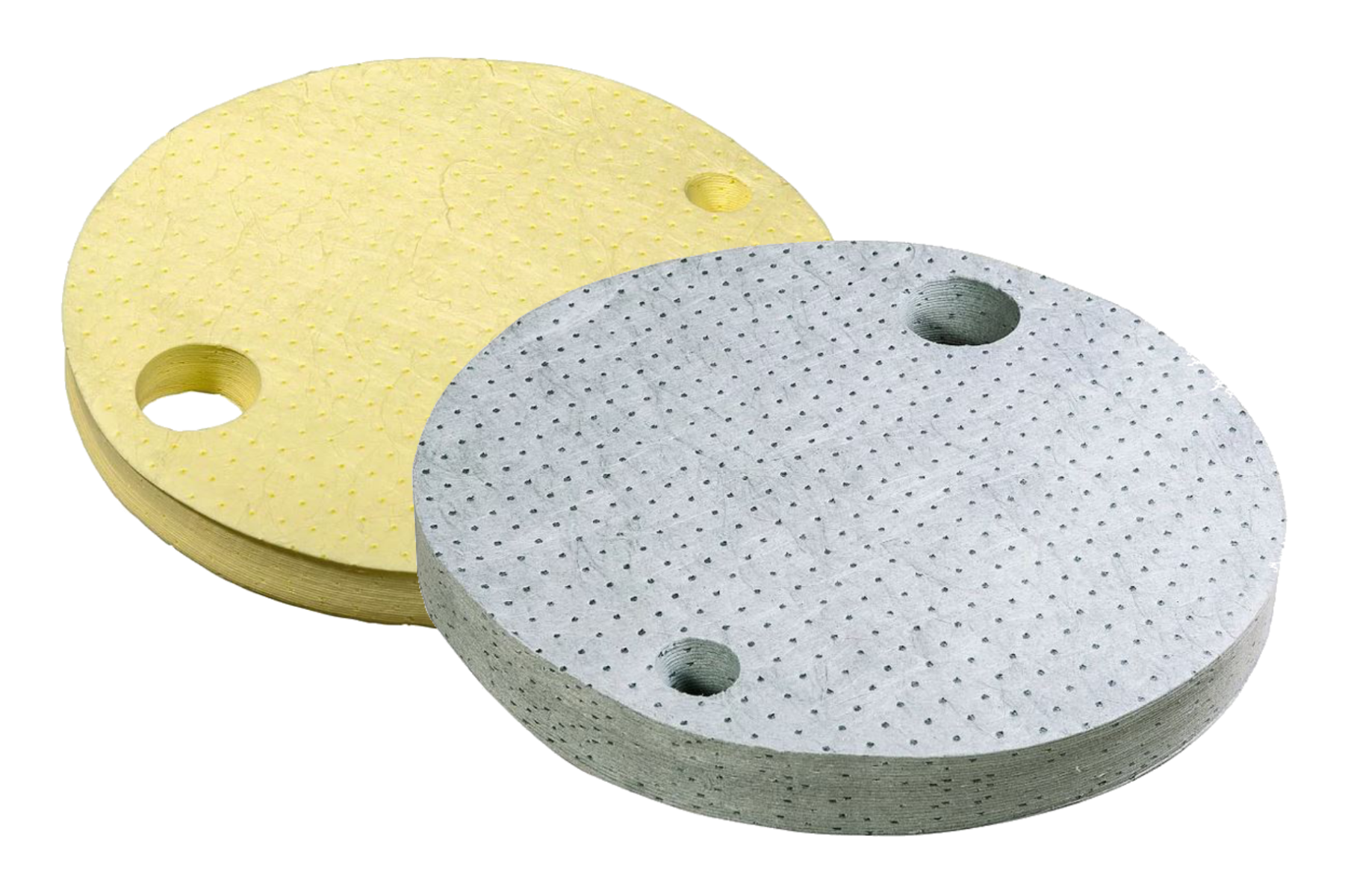

Here at Spillcraft we pride ourselves on helping our customers find the correct product for their needs. We want to give our customers the knowledge and understanding of what our products can do so you can be certain you have the correct equipment for your needs. We stock a wide range of reliable spill control products and can also source specific equipment from our manufacturers. Our absorbent range is made in the UK and provides high quality absorption for a wide range of industries around Great Britain.
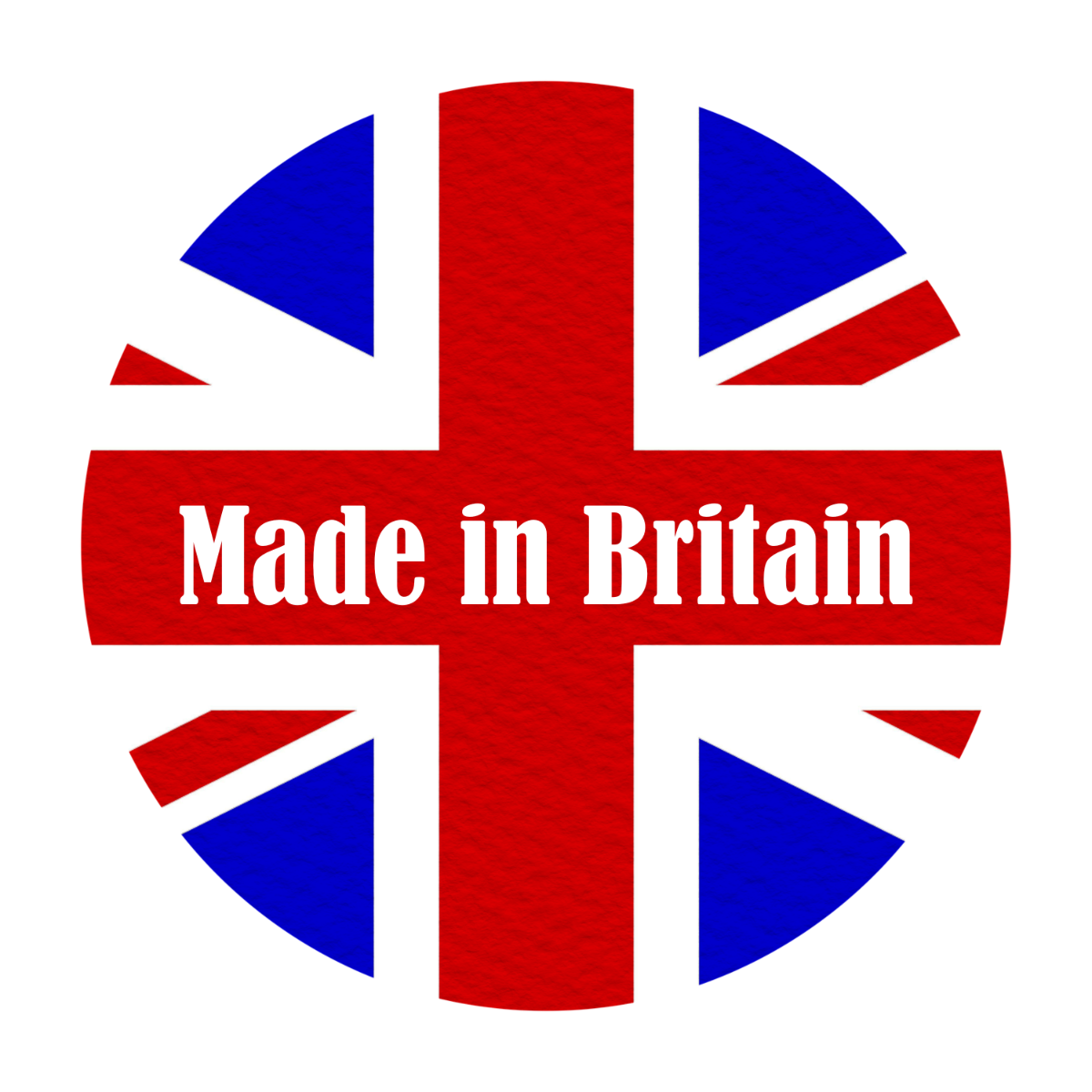

Have you thought about how you will store your absorbents? We also have a range of spill stations, absorbent dispensing stations, cleaning stations, caddies and spill kits that can help you manage the absorbents you need, ensuring they are protected from the weather, and kept secure until needed.
If you have any questions, please don’t hesitate to contact the Spillcraft team on 01606 352679 or email [email protected]
We hope you have found this guide to understanding absorbents useful.

